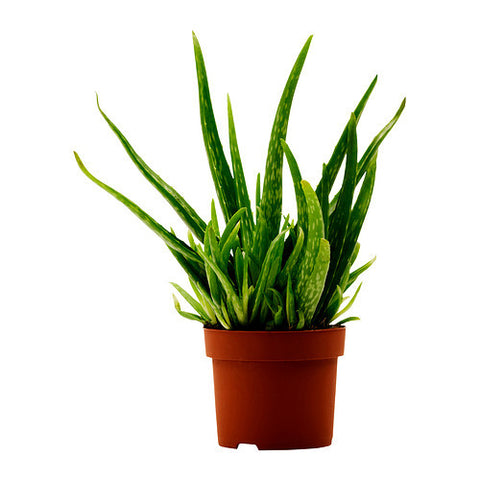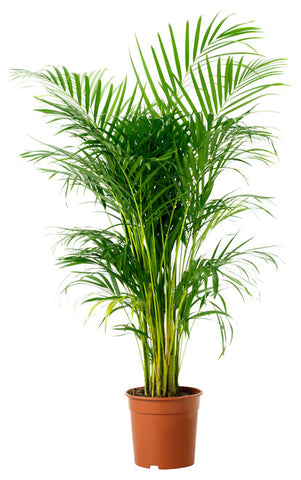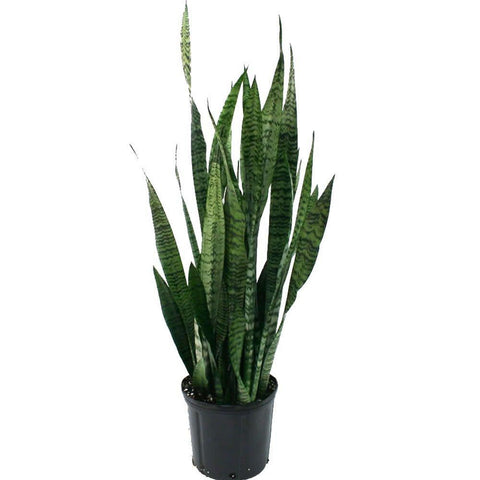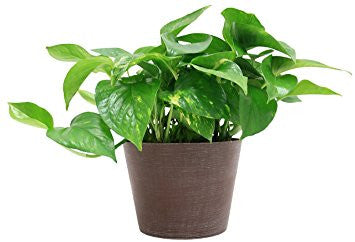Plants That Help Purify & Clean the Air
Plants that clean the air
Cleaning your home with cleaning solutions, painting your walls, or installing new carpets or building materials can release chemicals that pollute the air. Whether you live in a newer house, or an older house, it’s more than likely that your comfy home is harboring unhealthy toxins that are invisible to the eye. NASA scientists have discovered ways to keep their air clean while in space, and this logic applies to all enclosed indoor living spaces. NASA calls this the “Nature’s Life Support System” – their solution was an easy one that anyone can use, and that’s using indoor plants!
Three major toxins found in households are:
1) Formaldehyde, which are in carpets, upholstery, glues, paints, and more.
2) Benzene – this is found in plastics, synthetic fibers, lubricants, rubber, pesticides, & more.
3)Trichloroethylene is found in paint removers, rug cleaning solutions, adhesives, and more.
Living & working in environments with stagnant air filled with contaminants can cause something called The Sick Building Syndrome, especially when there is lack of ventilation. This syndrome can cause headaches, dizziness, nausea, eye, ear & throat irritation, difficulty of concentration, cold – flu like symptoms and dry cough.
We spend about 90% of our times indoors – it’s important to breathe clean, healthy air since we spend so much time in our living spaces. Our furniture, upholstery, cleaning products, and building materials in homes and offices can release toxic compounds like the ones listed above. Indoor air pollution can also be caused by pollens, bacteria, and molds caused by outdoor contaminants. Poorly ventilated spaces make these situations worse.
Household plants have been shown to reduce the amount of pollutants in the air by absorbing some of the particles from the air at the same time they take in carbon dioxide. Microorganisms associated with the plants in potting soils are also responsible for the natural cleaning effect.
Have no fear! Many indoor plants are easy to take care of, regardless of your black thumb. Look below to the list of plants that you can get started on placing inside your home for fresh, (breathe with me-AHHHH) clean air! For the best results, it’s recommended to put at least two plants in every room. Be sure not to over water, as this can lead to mold growth due to too much soil moisture - You want to aid the problem, not contribute!
1. The Peace Lily (Spathiphyllum)
In the 80’s, NASA and the Associated Landscape Contractors of America discovered that peace lilies absorb all three of the toxins listed above (benzene, formaldehyde, trichloroethylene), plus more. Make sure you keep the foliage dust free to maximize the plant’s air cleaning potential. It also has a lovely perk of blooming fragrant flowers throughout the summer.
How to care: Grows best in shady areas Keep soil slightly moist and feed monthly during spring and summer with an all-purpose liquid fertilizer.
What It Eliminates: formaldehyde, benzene, trichloroethylene, xylene, ammonia, and more.

2. Dracaena
These come in more than 40 varieties making it ideal to find one that suits your home of office space. They exhibit long, wide leaves that often feature lines of white, red, or cream colors. Keep in mind that these aren’t ideal for pet owners, these are toxic to dogs and cats.
What It Eliminates: Benzene, formaldehyde, trichloroethylene, and xylene.

3. Ficus/Weeping Fig
This plant can grow up to between two and ten feet tall, make this a perfect corner house plant! What’s awesome about this plant as well, as that it can be transported to the outside in the late spring, and brought back indoors when the temperatures are warm and above freezing.
How To Care: Grow it in bright, indirect light and allow soil to dry out between waterings.
What It Eliminates: Formaldehyde, benzene, trichloroethylene.

4. Boston Fern
Boston Ferns are easy to grow but do need a lot of moisture. They are equipped with many leaves and are perfect for potted or hanging pots that are capable of catching its own water.
How To Care: Keep this plant in an area that is in a cool location with high humidity and indirect light. It needs to stay moist to stay alive.
What It Eliminates: Formaldehyde & xylene

5. Aloe Vera
Aloe is easy to take care of as well as a beneficial health aid. The leaves contain a clear liquid that works great on sunburns or wounds, and are packed full of vitamins and amino acids that aid in anti-inflammatory and anti-bacterial properties.
How To Care: These need a good drainage system as they do not survive in standing water.
What It Eliminates: formaldehyde

6. Bamboo & Bamboo Palm
These are so easy to grow and are fun to watch grow! Bamboo is one of the fasted growing plants shooting to four to 12 feet high. This is due to how man air can be filtered through.
How To Care: Bamboo needs full sun or bright light to thrive well. Don’t place it in direct sunlight. Keep the soil moist. To deter spider mites, place the plant where air circulates freely.
What It Eliminates: Formaldehyde, benzene, trichloroethylene, carbon monoxide, chloroform.

7.Snake Plant
TAKE NOTE BLACK THUMBS! This is one of the hardest house plants to kill.
How To Care: Water occasionally. This plant prefers drier conditions and some sun
What It Eliminates: Formaldehyde, benzene, trichloroethylene, xylene

8. Golden Pothos
These are considered one of the most effective indoor air purifiers in the world. These look best in hanging pots or baskets.
How To Care: Avoid direct sunlight and water when the soil becomes dry to the touch. Feed monthly with a liquid plant food if desired. Trim back the leaves and tendrils when the plant becomes too large for your liking.
What It Eliminates: Formaldehyde, benzene, xylene, toluene, carbon monoxide

9. English Ivy
These also look best in hanging pots or baskets and are ideal for low light situations. English Ivy is great for removing allergens such as mold.
How To Care: There are a few varieties of English Ivy, green leaved will grow in bright indirect light and low light areas. Pale varieties need bright, indirect light. Water well and keep soil moist but not over-flooded through the winter months.
What It Eliminates: Formaldehyde, benzene, trichloroethylene, carbon monoxide.

10. Areca Palm
This is a beautiful plant with arching leaves. According to NASA and the Associated Landscape Contractors of America, this plant is the most sufficient at purifying the air and is an excellent air humidifier.
How To Care: Grow in bright light with shade from the heat. Give lots of water, but reduce the watering in the winter months.
What It Eliminates: benzene, carbon monoxide, formaldehyde, trichloroethylene, xylene

Visit our website for Ecofriendly Tools & Gadgets to help you live a greener and healthier lifestyle
- Gabriella De Luca